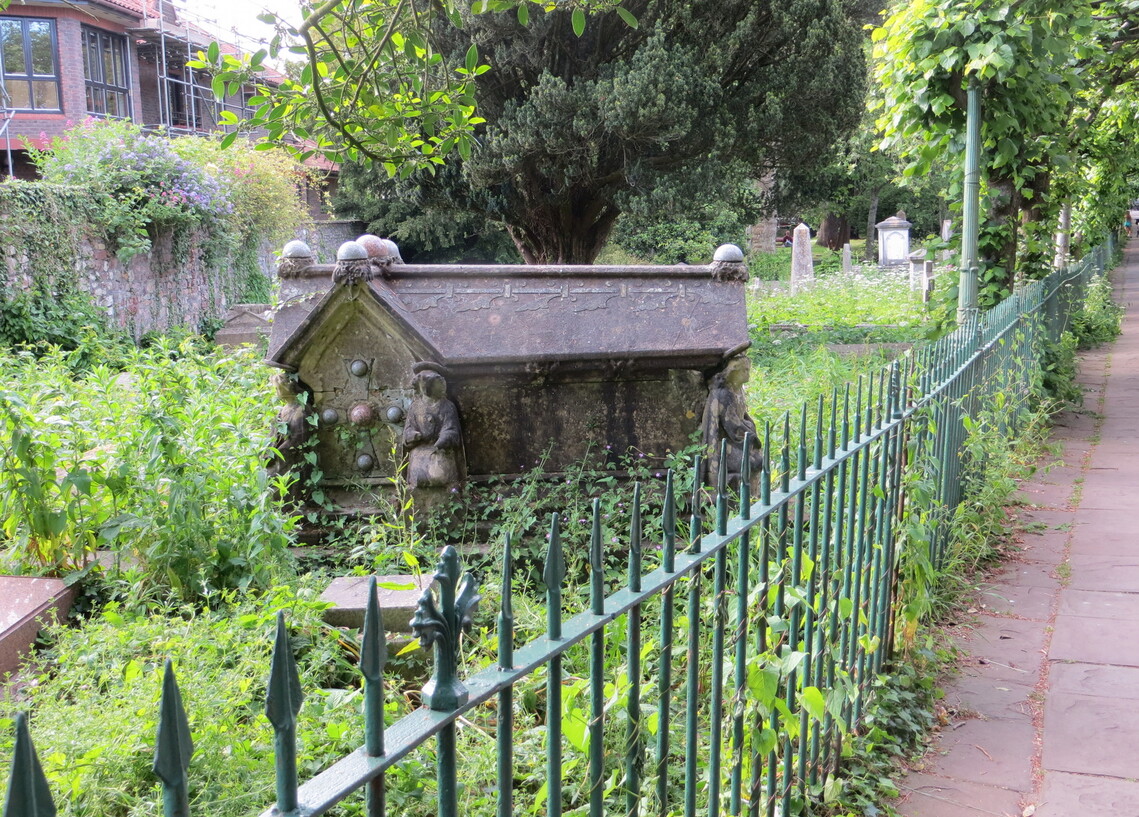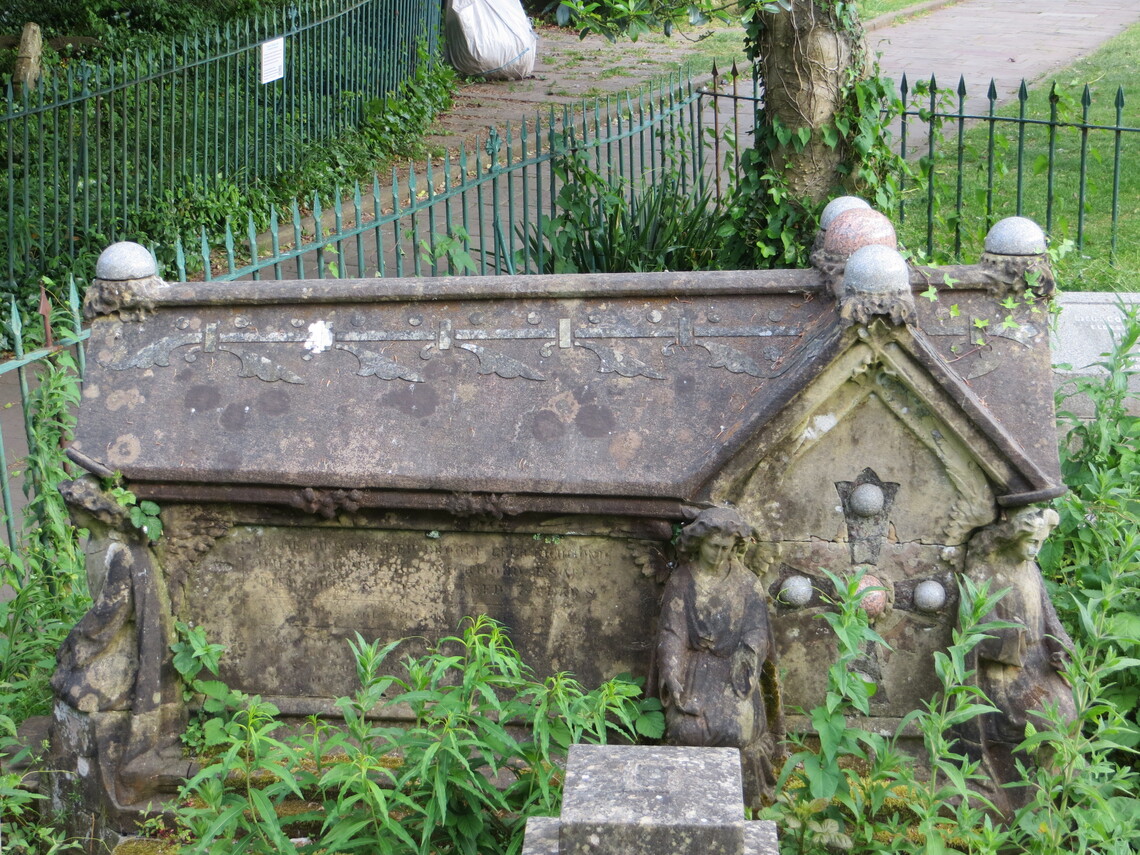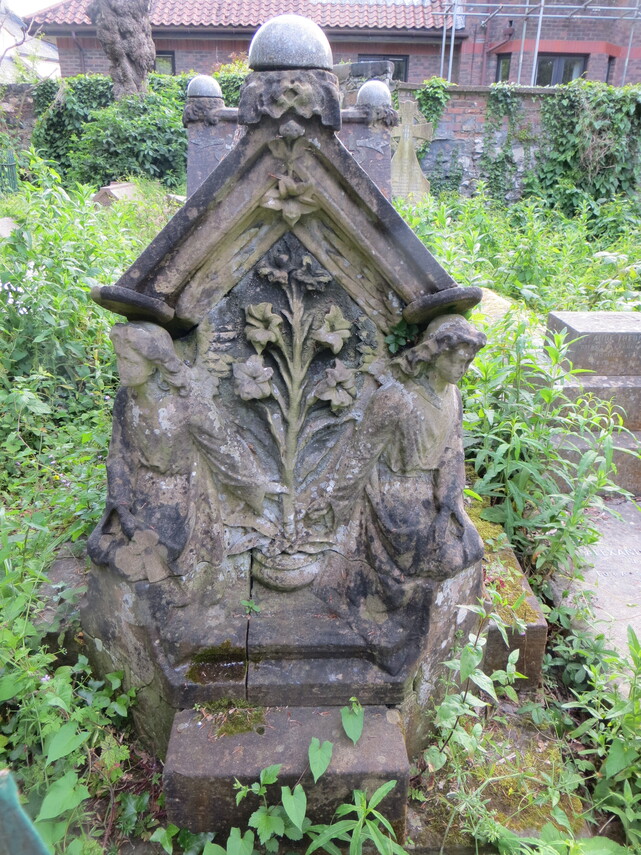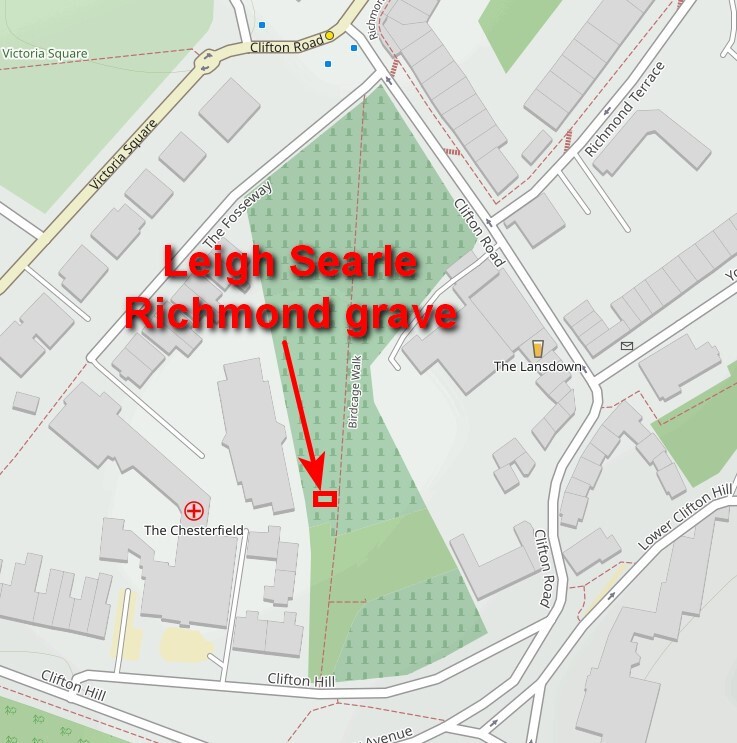Walking from Clifton Hill along Birdcage Walk, the passer-by will see to the left of the path a cruciform chest tomb embellished with granite ornaments, carved lilies and sorrowful angels. Marking the grave of Legh Serle Richmond and his seven year old son, the tomb is an interesting combination of worldly flamboyance and spiritual conceit.
Born in 1813, the third son of the Reverend Legh Richmond, a leading Anglican evangelical and celebrity pamphleteer, Legh Serle Richmond trained as a lawyer and became principal agent to the Earl of Stamford. By the late 1850s, he had acquired a substantial landholding and was living at Guilsborough Park in Northamptonshire when his health seems to have deteriorated. Moving first to Torquay and then to Clifton, where his mother was living with his widowed sister, he died in 1862 at Buckingham Place, a wealthy man.
While his tomb’s elaborate design reflects Legh Serle Richmond’s material success, the inscription includes the name of his father to emphasise his spiritual credentials. Famous for Annals of the Poor (1814) a series of religious conversion stories, the Reverend Legh Richmond was also well known for his rigorous approach to child-rearing. He had expounded his theories in letters to his own children, which were published after his death as Domestic Portraiture: Or, the Successful Application of Religious Principle in the Education of a Family, Exemplified in the Memoirs of Three of the Deceased Children of the Rev. Legh Richmond (1833).
“You are a sinner,” thundered the Reverend Richmond in a letter to one of his sons, “And without a gracious Saviour you must perish!” Since lasting joy was only to be found in heaven, the main point of life was to prepare for death. This terrifying ideology had a baleful influence on many young lives, as Charlotte Bronte showed with her description of Lowood school in Jane Eyre (1847). Jane and her fellow pupils suffer hunger, cold, brutality and sickness because, as Lowood’s proprietor Mr Brocklehurst explained, “I wish these girls to be the children of Grace.”
Decreeing that the pupils’ hair, “in plaits which vanity itself might have woven” must be cut off, Mr Brocklehurst demonstrates the Anglican evangelicals’ particular aversion to the sin of pride. There is therefore some irony that the name of the Reverend Legh Richmond, one of the movement’s most celebrated polemicists, should be used – along with the lilies and weeping angels – as an embellishment and a boast on his son’s and grandson’s tomb.
Grave seen from Birdcage Walk
North side of the Richmond grave
South side of Richmond grave
East side of Richmond grave
Location of grave in the churchyard - the grave is best viewed from outside the railings to the east. Be warned that walking among the crowded gravestones is muddy and slippy underfoot, with many potential trip hazards.




